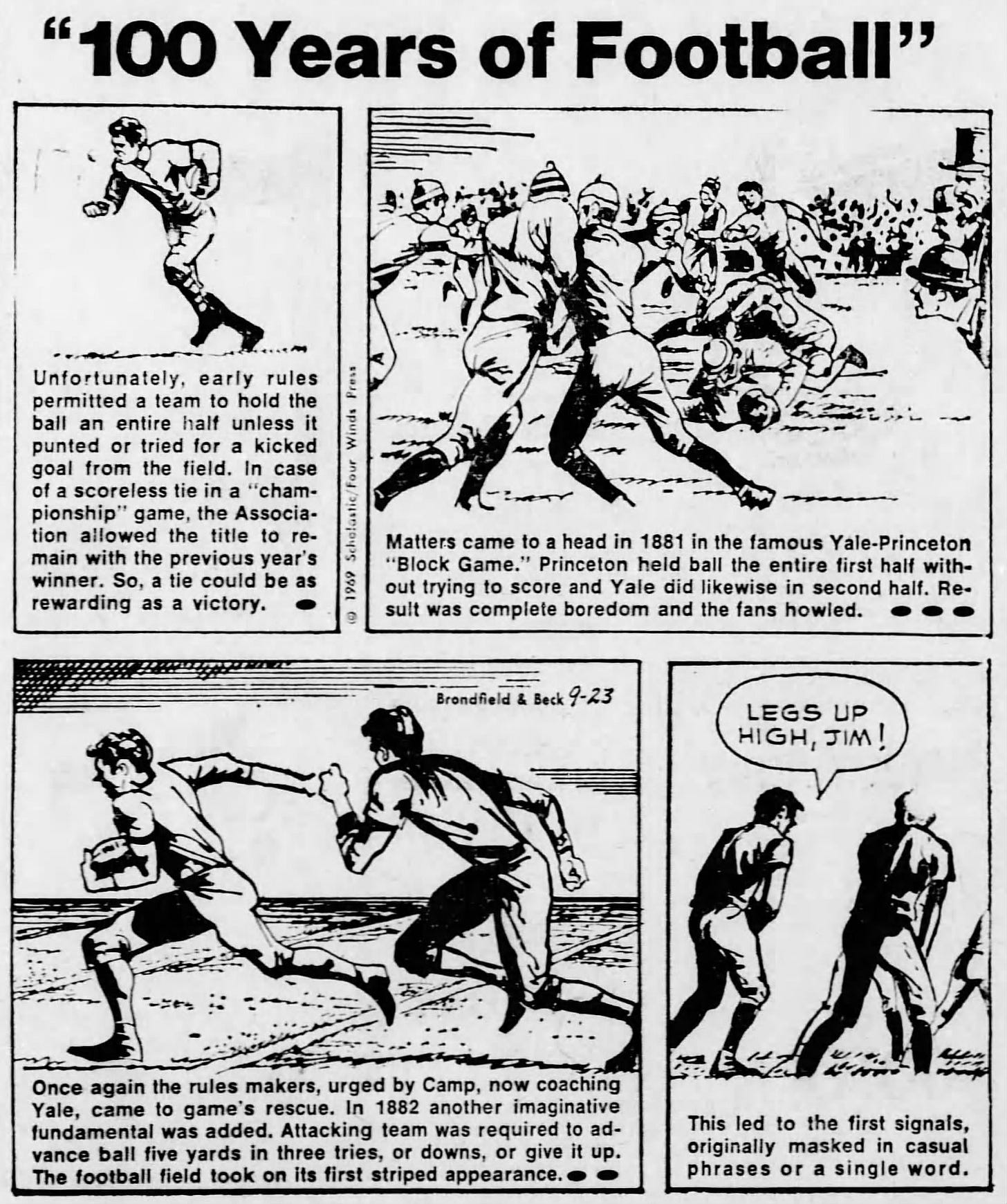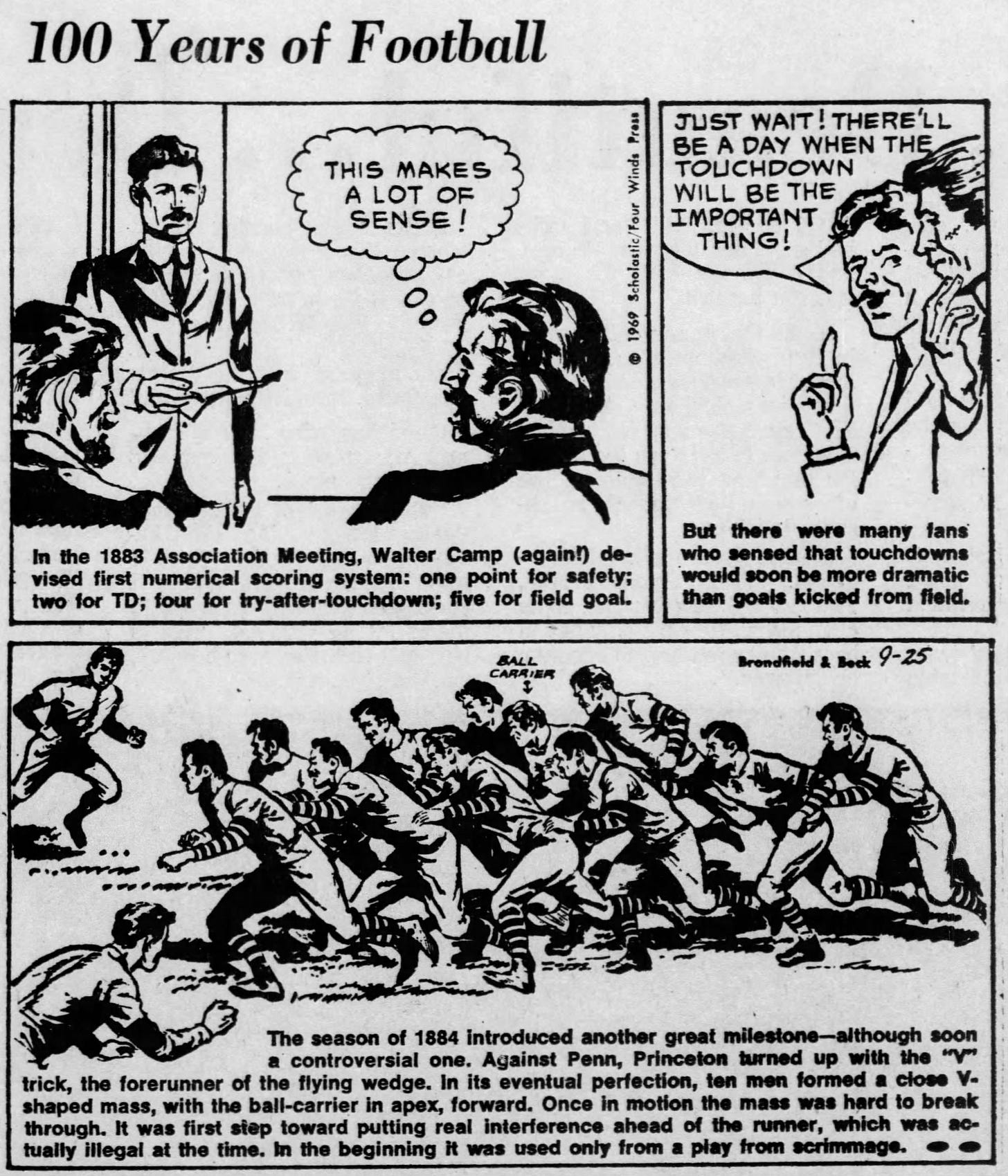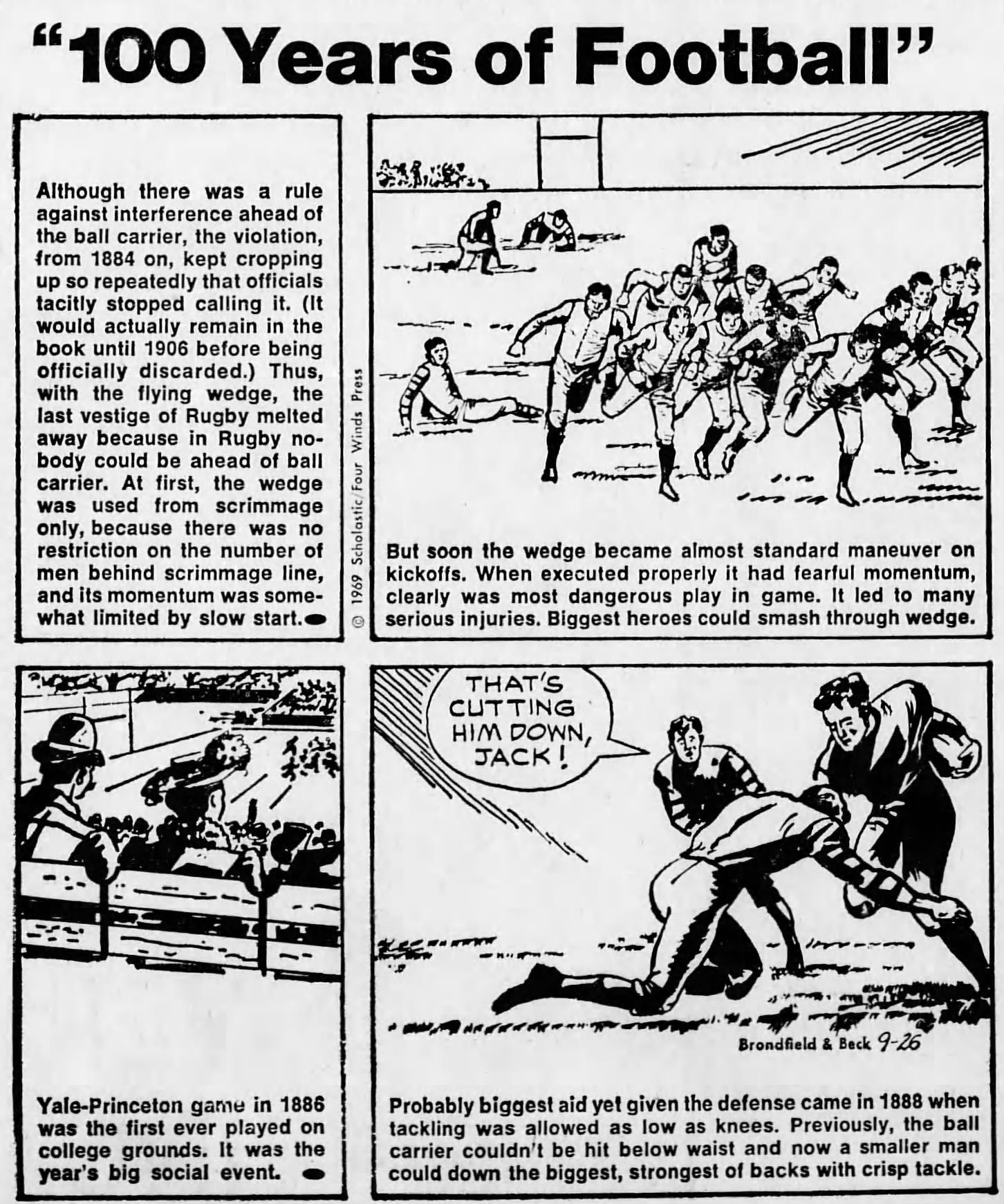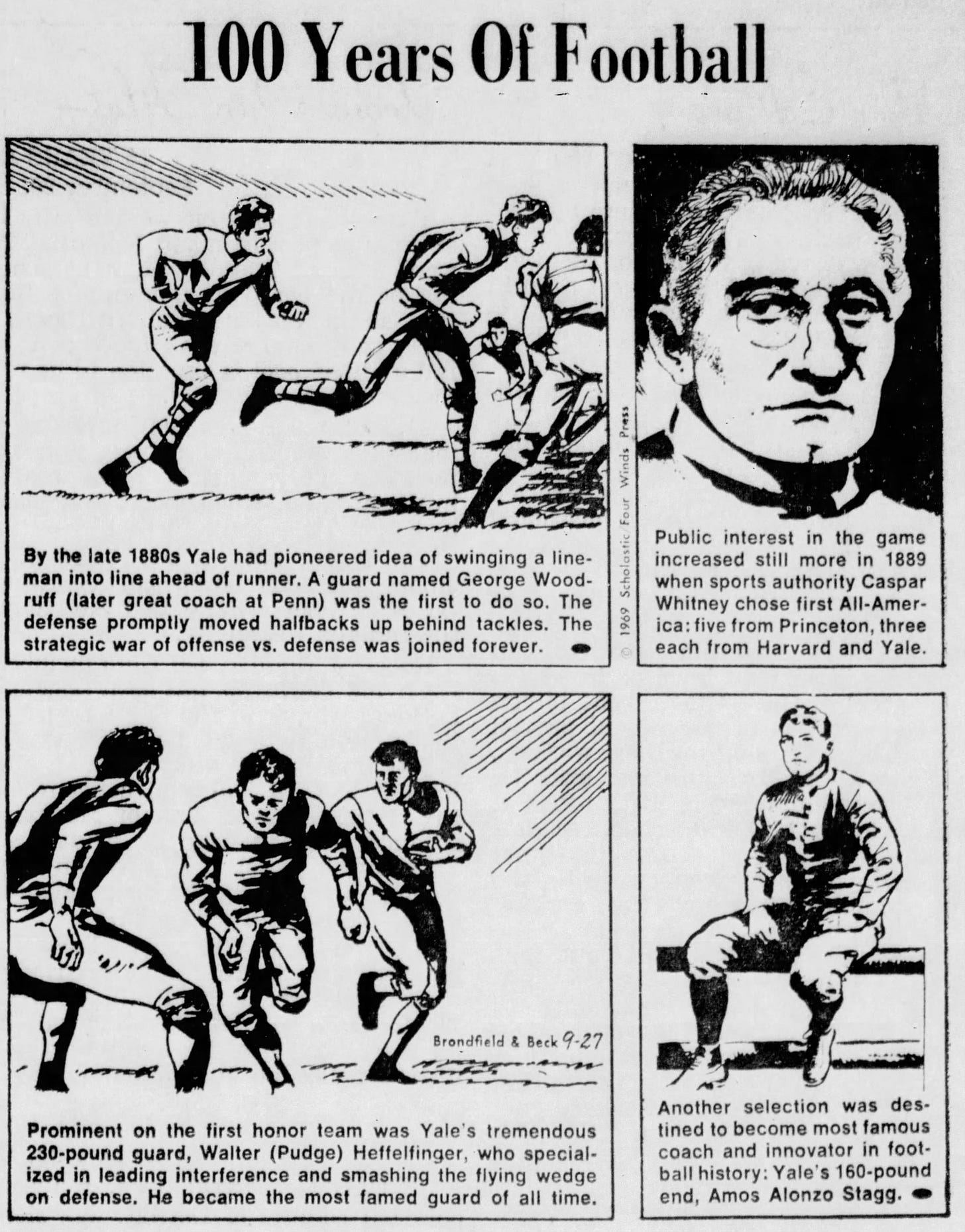Today's Tidbit... 100 Years of Football: The 1880s
This is the second in a series looking back at “100 Years OF Football,” syndicated cartoons published by Jerry Brondfield and Charles Beck in 1969. Today's version covers the 1880s.
Several fundamental changes in football’s evolution away from rugby emerged in the first half of the 1880s, initiating the year after year tweaking of football’s rules. The compounding effect has resulted in a game substantially different from rugby.
Brief notes follow each cartoon, primarily so their contents are discoverable from an indexing and search perspective.
As always, click the image to enlarge...
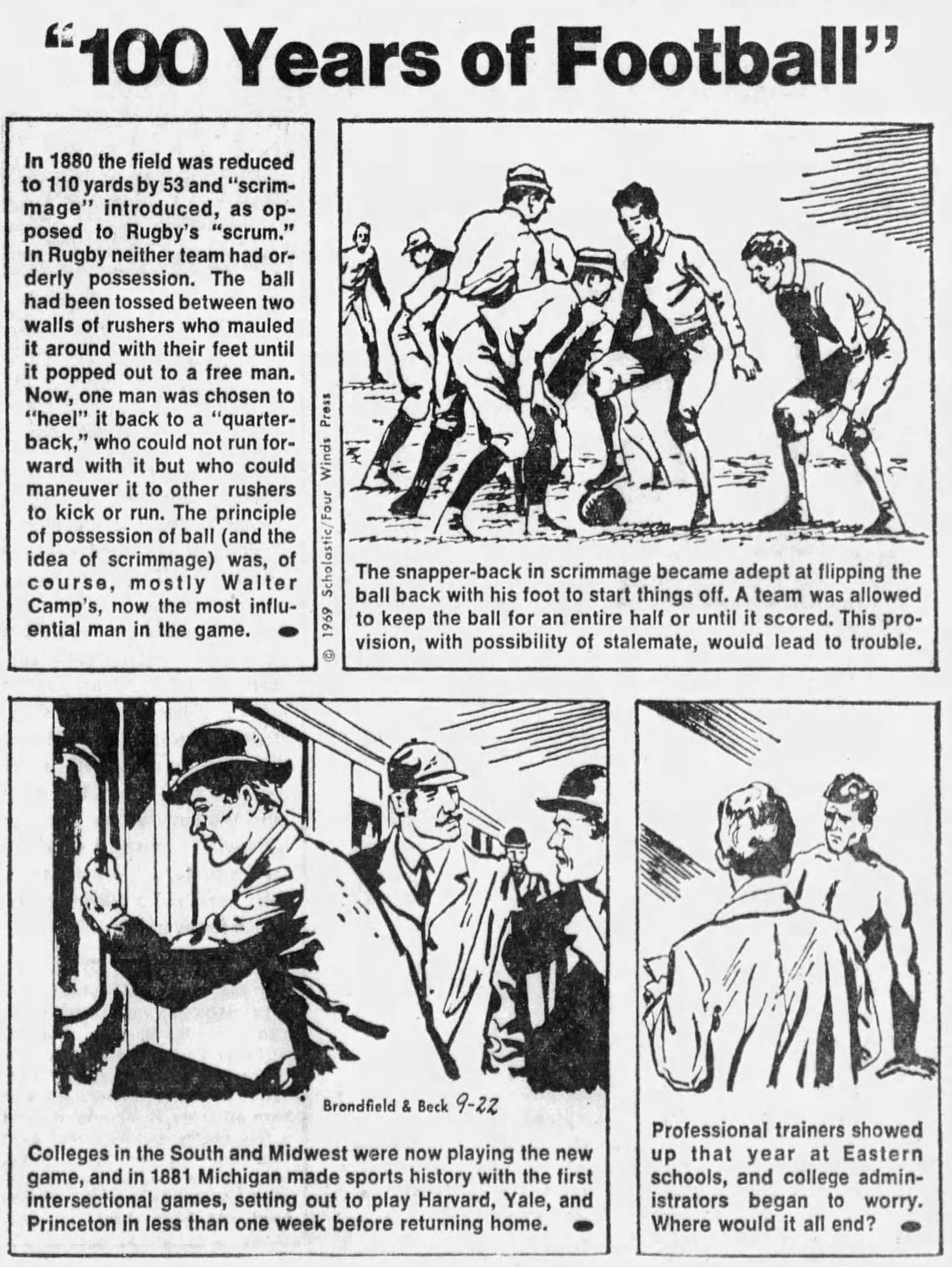
Football switched from the rugby scrum to the controlled scrimmage, while the snapperback used his foot to send the ball backward. Football also began spreading outside the East, with Michigan leading the effort by playing Harvard, Yale, and Princeton in 1881. Professional trainers arrived on the scene.
Despite switching to the scrimmage, the rules did not require teams to give up possession of the ball, leading to Yale and Princeton playing “block games.” The system of downs with the field marked as a gridiron fixed the problem, leading to structured plays called at the line via signals, which were verbal commands akin to audibles.
The backfield position names were in place by the 1870s, though the linemen were collectively called forwards until the mid-1880s. The downs system favored power-oriented offenses. The scoring system was convoluted and based on equivalencies. Eligibility standards began to appear.
Football moved to points-based scoring, leading to arguments about the relative value of touchdowns versus kicked goals that lasted until 1912. The V trick or wedge arrived as a play from scrimmage.
Interference or blocking was illegal in rugby due to the blocker being ahead of the ball (aka off-side), entered football in 1884. The flying wedge emerged on kickoffs, and tackling between the waist and knees became legal. Previously, only tackling above the waist was legal.
Yale pioneered blocking backs and pulling guards on offense. Sports editor Caspar Whitney named the first All-American team in 1889, which included Amos Alonzo Stagg.
We will see continued changes in football in the 1890s when the game fully adopted the dangerous mass and momentum style of play.
Click the appropriate link for other stories in the series:
1870s | 1880s | 1890s | 1900-1905 | 1905-1910 | 1910-1915 | 1916-1922 | 1923-1926 | 1927-1930 | 1931-1935 | 1935-1939 | 1940-1946 | 1946-1952 | 1953-1963 | The Pros | Modern NFL and Post-1906 All-Stars
Football Archaeology is reader-supported. Click here to buy one of my books or otherwise support the site.


